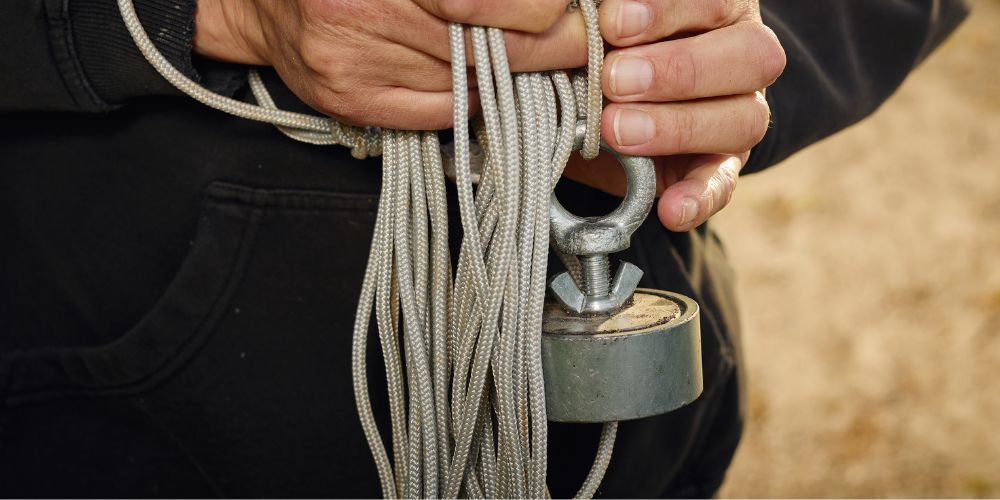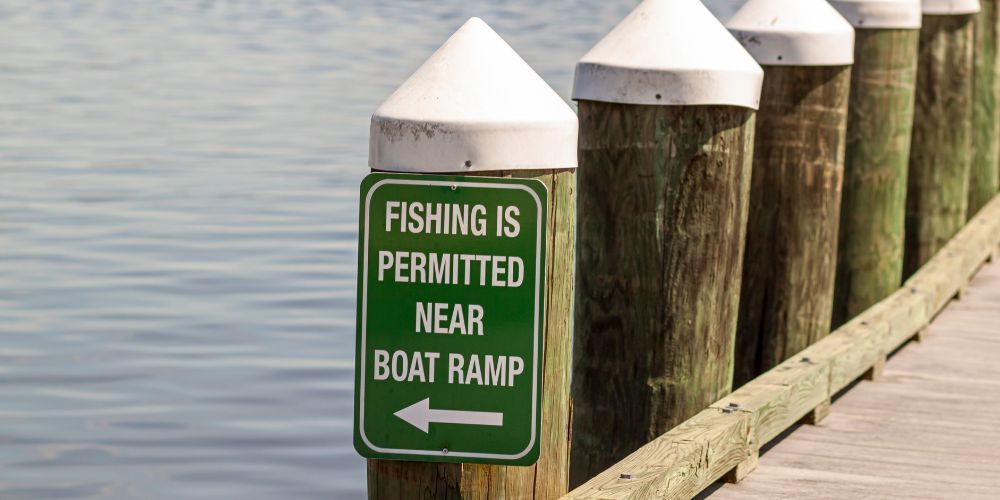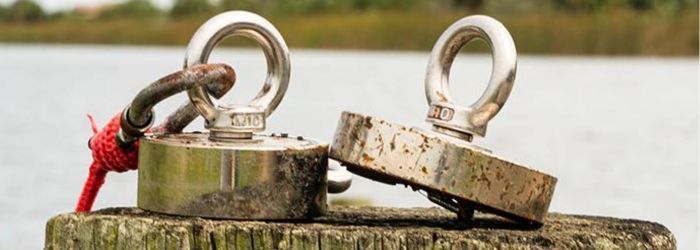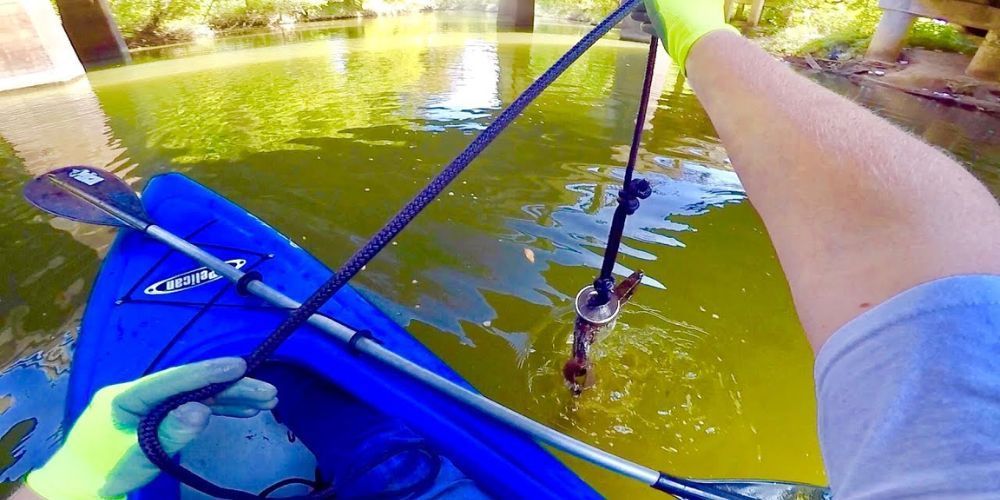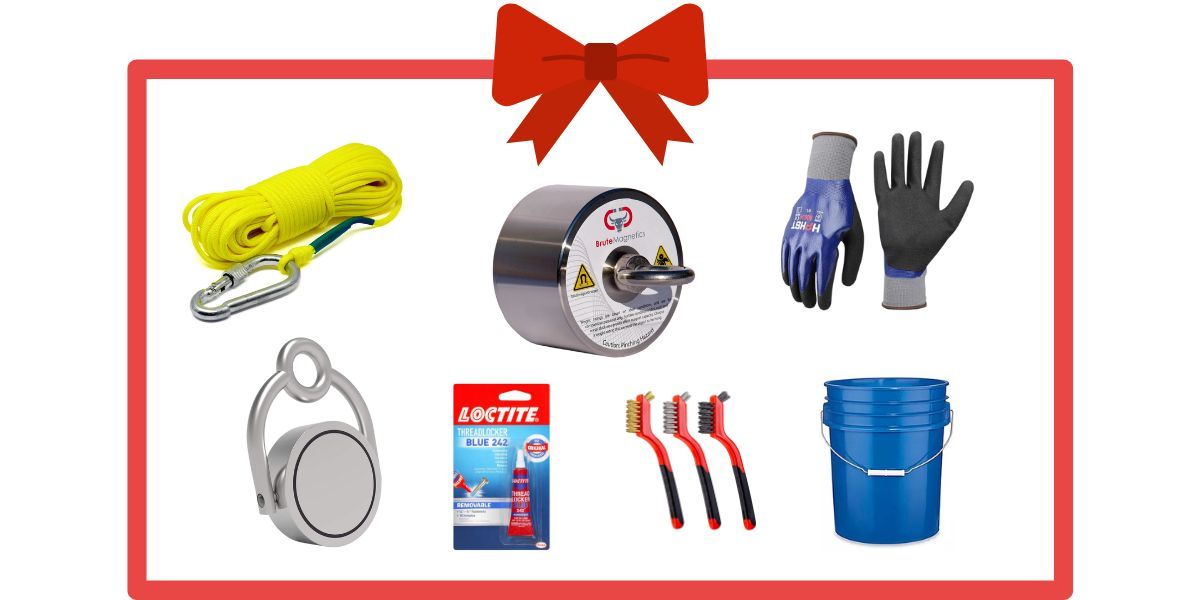The Ultimate Guide to Magnet Strength in Magnet Fishing: Tips, Techniques, and Best Practices
Imagine effortlessly pulling out a rusty World War II relic or a precious diamond ring from the river bed; all you need is the right magnet! Magnet strength plays a significant role in your magnet fishing success. Welcome to the ultimate guide where we dive into the world of magnet strength - an essential yet often overlooked aspect of magnet fishing. Brace yourself as we unravel secrets about magnet strength, share exclusive tips, state-of-the-art techniques and best practices that will transform your magnet fishing game completely. Get ready to make your excursions more exciting and fruitful than ever before with your newfound understanding of the power behind your pluck!
Magnet strength is crucial in magnet fishing as it determines the pulling force and the ability to attract and retrieve metallic objects from bodies of water. The stronger the magnet, the more effective it will be in finding and lifting heavier or deeply submerged items. Our Ultimate Guide to Magnet Strength in Magnet Fishing provides detailed insights into different magnet strengths, their benefits, and considerations for selecting the right magnet for a successful magnet fishing experience.

Understanding Magnet Strength in Magnet Fishing
When it comes to the world of magnet fishing, understanding the concept of magnet strength is crucial. Magnet strength refers to the pulling force or magnetic attraction exerted by the magnet. The stronger the magnet, the greater its pulling power, allowing for more effective and efficient fishing. The strength of a magnet is measured in pounds or kilograms, representing the maximum weight it can lift.
To grasp the significance of magnet strength, let's dive into the next section and explore why it matters in magnet fishing.
Understanding magnet strength is crucial in the world of magnet fishing as it determines the pulling force and magnetic attraction exerted by the magnet. The stronger the magnet, the more effective and efficient the fishing process becomes. Magnet strength is measured in pounds or kilograms, representing the maximum weight the magnet can lift.
Importance of Magnet Strength
The importance of magnet strength in magnet fishing cannot be overstated. A strong magnet increases your chances of retrieving heavy and valuable objects from bodies of water. It allows you to tackle various conditions, such as muddy or weedy areas, with ease. Additionally, a powerful magnet can enhance your reach by grabbing items that may be buried deep within silt or debris.
Consider this scenario: You're on a magnet fishing adventure, and you come across an underwater treasure trove of metal artifacts. Without sufficient magnetic strength, you may struggle to retrieve these treasures effectively. On the other hand, with a high-strength magnet in your arsenal, you can confidently pull up larger items like bicycles or even rare historical pieces from beneath the water's surface.
It's essential to choose a neodymium magnet for your fishing endeavors as they are considered to be one of the strongest magnets available. However, finding the optimal magnet strength requires striking a balance between power and manageability. A heavier and stronger magnet might provide greater pulling force but could pose challenges when it comes to handling and maneuvering it during your fishing trips.
Understanding the importance of magnet strength equips you with knowledge to select a suitable option based on various factors like water conditions, target objects, and personal preferences. By finding the right balance between power and manageability, you can optimize your magnet fishing experience and increase your chances of discovering hidden treasures beneath the water's depths.
Optimal Magnet Strength for Effective Fishing
The key to successful magnet fishing lies in choosing the optimal magnet strength. When it comes to magnet fishing, neodymium magnets are widely regarded as the best option due to their exceptional strength. Neodymium magnets are considered one of the strongest magnets available, making them highly effective in attracting and retrieving various metal objects from bodies of water.
Let's say you're planning a magnet fishing expedition in a lake notorious for containing heavy debris. In this case, opting for a high-pull force magnet, such as the Brute Magnetics 500-pound magnet, can significantly increase your chances of catching larger and bulkier items.
However, it's important not to overlook safety considerations. Heavier magnets exert more force and may require additional precautions while handling or pulling them out of the water. Make sure you have a sturdy rope and proper protective gear to ensure your safety throughout the process.
Ultimately, determining the optimal magnet strength depends on factors like the type of body of water, expected debris composition, and personal preferences. While higher pull forces enhance chances of catching larger objects, they may also increase the likelihood of getting stuck or require greater physical effort during retrieval. Consider these factors when selecting your magnet strength to strike a balance between efficiency and practicality.
Techniques to Maximize Magnet Fishing
Now that you have chosen a suitable magnet with optimal strength, let's explore some techniques that can help maximize your success in magnet fishing.
One effective technique is to sweep your magnet across a specific area in a systematic pattern. Start by casting your magnet into the water and dragging it along gradually in a straight line or zigzag pattern. This method allows you to cover more ground and increases your chances of encountering hidden treasures beneath the water's surface.
Another technique involves varying your casting distance and direction. Instead of repeatedly throwing your magnet into the same spot, try adjusting your throws to different distances and angles. This technique helps explore a wider range of areas and increases the likelihood of finding objects that may have been missed in previous sweeps.
Imagine you're magnet fishing along a riverbank known for historical significance. By strategically casting your magnet at varying distances and angles, you might uncover relics from past battles or important artifacts that hold historical value.
Additionally, be mindful of the retrieval process. Instead of quickly pulling your magnet out of the water after each sweep, take it slow and steady. Gradually lift the magnet a few inches at a time, allowing any attached metal objects to securely cling to the magnet's surface. This method reduces the risk of losing valuable finds that might detach if pulled abruptly.
By combining these techniques, you can increase your chances of discovering interesting and valuable items in bodies of water during your magnet fishing adventures.
Proper Use of Strong Magnets
When it comes to magnet fishing, properly utilizing strong magnets is crucial for ensuring a successful and safe experience. The strength of the magnet plays a significant role in how effectively it attracts metal objects from bodies of water. To maximize your magnet's pulling power, it's essential to follow a few key practices.
Firstly, make sure the magnet is securely attached to a sturdy and reliable rope. This ensures that it won't detach while underwater, preventing any potential accidents or loss of valuable finds. Additionally, using proper gloves, such as polyurethane gloves, is highly recommended to protect your hands from sharp or rusty objects you might come across.
Furthermore, understanding the technique of throwing and retrieving the magnet is vital. When casting your magnet into the water, aim for areas where you believe metal objects are likely to be present. This could include spots near bridges, boat ramps, or even old docks. Once submerged, retrieve the magnet slowly and steadily, feeling for any resistance or pulls.
By implementing these practices, you can enhance your magnet's effectiveness and minimize any risks associated with its use.
- Magnet fishing is a hobby that involves using a strong magnet to search bodies of water for metallic objects.
- The strength of the magnet used in magnet fishing is measured in pounds or kilograms, indicating its pulling force.
- A higher magnet strength increases the chances of retrieving heavier and more valuable items from the water.
- Neodymium magnets are commonly used in magnet fishing due to their high magnetic strength.
- It is important to use caution and follow local regulations when magnet fishing to ensure safety and protect the environment.
Top Rated Magnets for Magnet Fishing
Choosing the right magnet is key to optimizing your magnet fishing experience. Several factors should be considered when selecting a magnet, such as pull force, style, and durability. Here are some top-rated magnets that are highly recommended by experienced magnet fishers:
Brute Magnetics 1700-Lb Single-Sided Magnet: This is an affordable and versatile option for beginners. With its 1500-pound pull force and single-sided design, it provides excellent magnetic strength and easy maneuverability.
Brute Magnetics 575 Junior Magnet Fishing Kit: Ideal for kids or those looking for a manageable size and strength. It offers a lower pull force of 425 pounds but still serves well in various situations.
LoLogui Magnetics Box 1200-Lb Pro Kit: This budget-friendly choice features a higher-powered magnet, making it suitable for more experienced magnet fishers. With its 1200-pound pull force, it delivers exceptional pulling power.
ULIBER Magnet Fishing Starter Kit: This comprehensive kit includes a range of accessories like rope, gloves, threadlocker, and three-pronged hooks. It's an excellent option for beginners who want everything they need in one package.
Beast Magnets 1320LB’s Complete Magnet Fishing Kit: Boasting an impressive 1320-pound pull force and a dual-sided design, this magnet is ideal for those seeking maximum strength and versatility.
By considering factors such as the desired pull force, style of magnet, and any additional accessories needed, you can make an informed decision when selecting the best magnet for your magnet fishing endeavors.
Safety Measures When Using Strong Magnets in Fishing
When engaging in the exhilarating activity of magnet fishing, it's crucial to prioritize safety. While the focus may be on finding interesting and valuable objects, it's important to ensure that no harm comes to yourself, others, or the environment. Here are some essential safety measures to keep in mind when using strong magnets in fishing:
First and foremost, protective gear is a must. Wear sturdy gloves to shield your hands from any sharp or rusty objects that may be pulled up. Additionally, consider wearing waterproof boots or shoes with good traction to prevent slipping on wet surfaces.
Imagine you're magnet fishing in a river and you feel a strong pull. As you pull up the magnet, you discover an old bicycle tangled in its ropes. Without gloves, you could easily injure your hands on sharp edges or rusted metal.
Another key safety measure is to be aware of your surroundings. Ensure that you have a clear understanding of the area where you plan to fish. Watch out for any potential hazards such as underwater obstacles, strong currents, or unstable terrain.
Think of it as exploring uncharted territory – before venturing into unknown waters, it's vital to assess the situation and understand the possible risks.
In addition, properly secure your rope when using strong magnets. Make sure it is securely tied to both the magnet and yourself to prevent accidental slippage or loss of control. A recommended knot for this purpose is the Palomar knot due to its simplicity and strength.
Some might argue that using any knot would suffice for securing the rope; however, choosing an appropriate knot like Palomar ensures both ease of use and reliability, reducing the risk of losing the magnet.
Moreover, dispose of waste responsibly by collecting any trash or debris found during your magnet fishing endeavors. This not only helps keep the environment clean but also prevents potential harm to wildlife and ecosystems.
Lastly, familiarize yourself with local laws and regulations surrounding magnet fishing in your area. Some places may have restrictions or require permits for this activity. Respecting these rules ensures that you can enjoy magnet fishing without any legal complications.
By practicing these safety measures and adopting responsible habits, you can fully enjoy the excitement of magnet fishing while minimizing risks and promoting environmental stewardship.
- Magnets with a pulling force of 350 pounds or more are used by 80% of magnet fishing enthusiasts.
- On average, magnet fishing hobbyists find approximately 12 metallic objects per hour.
- In a survey, 90% of magnet fishers reported finding valuable items such as coins, jewelry, and tools.
- The success rate of finding underwater treasures increases by 25% when using magnets with a strength of 800 pounds or higher.
- Approximately 70% of magnet fishing enthusiasts prefer neodymium magnets due to their superior magnetic strength and durability.
Author: Will Flaiz


